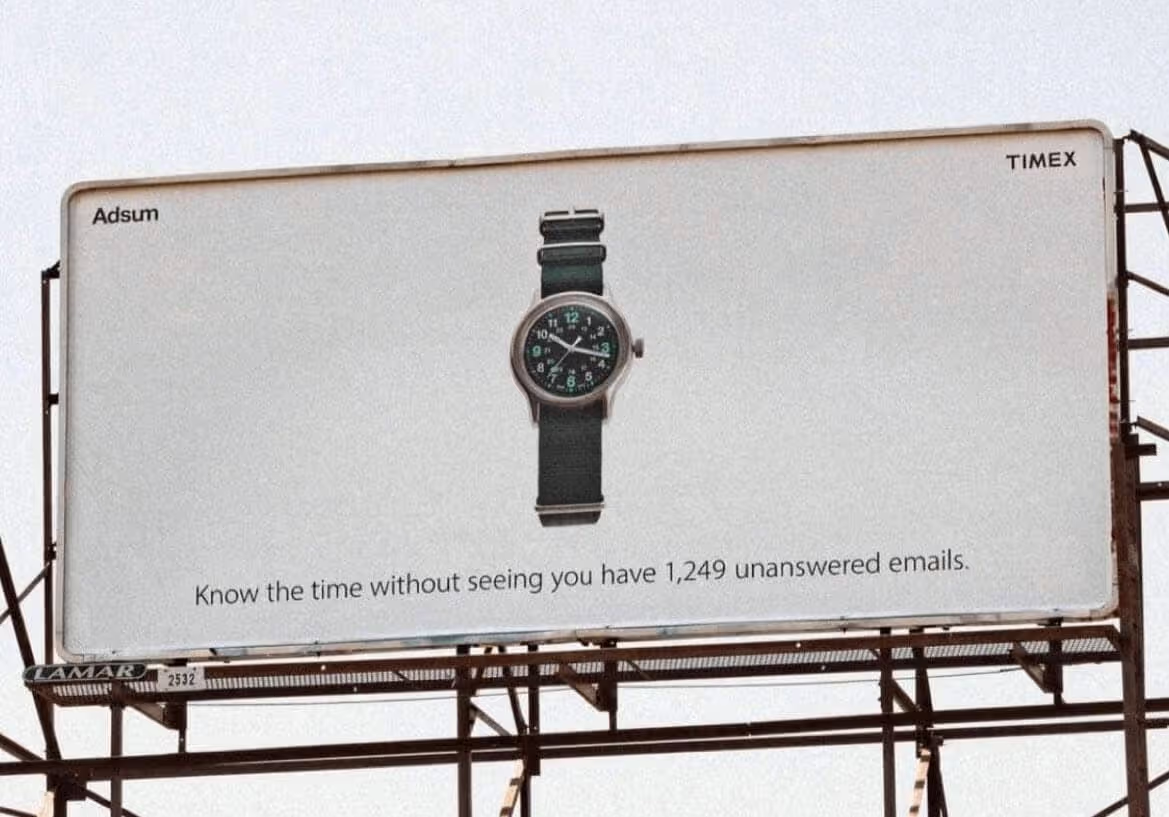Growth Newsletter #282
“You only get one chance to make a first impression.”
It sounds like corny advice from my dad before my first big interview (because that’s exactly what he said), but there’s a lot of truth in it. First impressions convey so much in a short amount of time, and they can’t be undone.
While this newsletter won’t show you how to give a firmer handshake or make stronger eye contact, it will show you how to make better first impressions through your website, namely where people go first: above the fold (ATF) on your homepage or landing page(s).
This all-important ~600-pixel-high area is where people make a split-second decision to either jump or keep scrolling, so there’s a lot of weight resting on it.
The best ATFs speak simply, but it’s not always a simple path to get there.
That’s why this newsletter will help you create a clear, compelling ATF message that makes an airtight case for your company.
That said, your ATF message is just one aspect of your website. For comprehensive deep-dives that help you build an entire high-converting website, our Growth Program 2.0 can be of service.
Now let’s help you make a great first impression.
— Gil
This week's tactics
Your Above-The-Fold Messaging Playbook
Insight from Gil Templeton — Demand Curve Staff Writer
While this newsletter focuses on increasing above-the-fold conversions and standing out from your competitors, it’s not just about your ATF. It’s also about learning how to position your startup in a way that excites people.
Your ATF should be a concise distillation of your brand in elemental form. Once you’ve cracked the code, it can serve as your Rosetta Stone to inform other key messaging pieces.
On the other hand, if you’re having trouble putting together an ATF that converts, it might be symptomatic of other issues that require a closer look.
If your current ATF is confusing or uninteresting, visitors bounce. This happens because of:
- Weak messaging: Your product’s purpose is unclear, irrelevant, or not compelling enough.
- Weak design: Your design is unprofessional, dated, or unintuitive.
This newsletter specifically addresses ATF messaging through a systematic, proven approach. Stay tuned for a follow-up newsletter where we’ll focus on design. You can also check out this entire playbook on ATFs.
Reminder: It’s. Not. About. You.
Before we get into specifics, let’s re-ground ourselves with an overarching note: your ATF copy is not the place to gush and blab all about your company. It’s the place to show visitors what they stand to gain, and how you’re positioned to deliver it.
This general principle is one of the hardest marketing lessons for businesses to fully embrace. It seems obvious, yet many ATF headlines fall into the trap of descriptive, bland “self-speak” that lacks specificity and a clear benefit.
We made the B.A.D. to B.E.S.T. framework to help you understand this messaging flip in greater depth. It shows you how to turn Boastful, Abstract, and Dry copy into copy that’s Benefit-Led, Emotional, Story-Driven, and Transformational, similar to what you’ll see in the first examples below:

The one on the right is better because:
- It no longer sounds like cold, descriptive, corporate-speak.
- It describes a very tangible, specific benefit of the product.

The one on the right is better because:
- It is no longer vague, cliché self-speak.
- It shows readers what they stand to gain by showing specific benefits.
Both of the improved examples speak to transformation, especially through specificity, which is a tenet of strong ATF messaging.
People really like specificity. For example, Heinz’s “57 Varieties” that’s on their bottles (and also the namesake of their steak sauce) feels specific and intentional. Even though it’s a meaningless mashup of Henry J Heinz’s lucky number (5) with his wife’s lucky number (7), people see that specific number and infer meaning: “They tried 56 recipes ‘til they got it just right.” Or “They have all kinds of options, they must know what they’re doing.” etc.
Now let’s get to the specific steps for writing a great ATF header.
Headline Pt. 1: Identify How Users Get Value
Put simply, value props are the ways people “get value” from your product or service. For this first exercise, let's walk through the following steps to unlock some value props:
- Bad alternative: What bad alternative do people resort to when they lack your product?
- Better solution: How is your product better than the bad alternative?
- Action statement: Now turn the last step into an actionable directive. That’s a value prop.
Let’s look at a few examples to see these three steps in action:
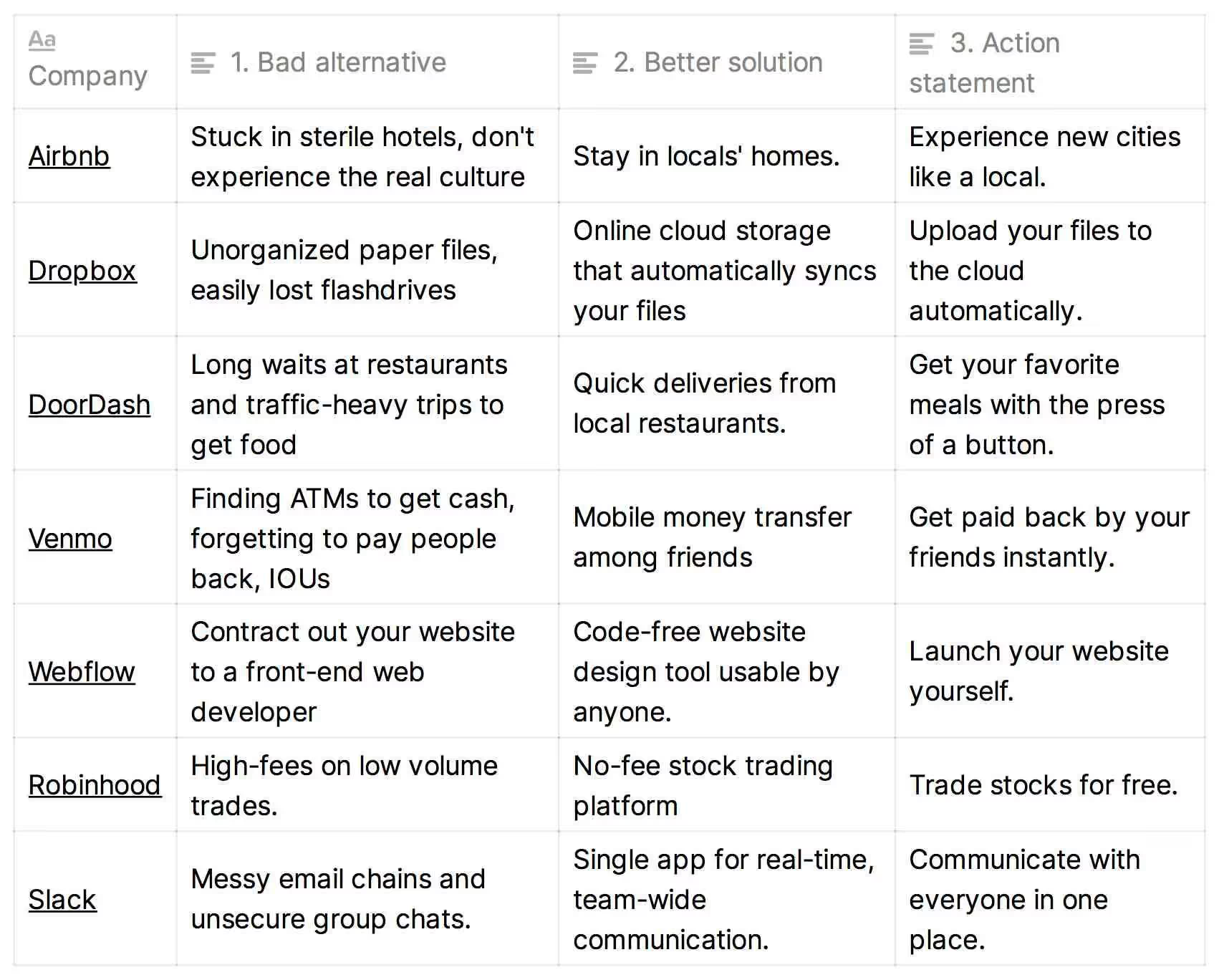
Nailing your value props (and knowing which one to lead with) is a critical component for startup success, and it’s a significant part of the Growth Program 2.0 curriculum. While this newsletter focuses on ATF copy, it’s inherently dependent on strong value props, so make sure you take the time to get them right.
Once you’ve got a concise action statement embodying your most compelling and/or differentiating value prop, let’s move to part 2.
Headline Pt. 2: Add a Hook
Layering a hook onto your marquee headline should do one of two things:
- Make a bold claim
- Proactively handle skepticism or objections
Let’s look at two examples for that first “bold claim” bullet below, where the option on the left is a vague statement, and the option on the right augments it with a claim.
Option A: Hooks that make bold claims

Seeing that specific claim makes it more enticing to readers. They’ll want to know how that’s possible, so they’re more likely to keep scrolling to find out.
Let’s look at another example that does something similar:

On the other hand, you can go too far with a claim and make a user’s BS-detector light up. Don’t cheapen your brand or compromise trust by sounding too good to be true, like this example below:
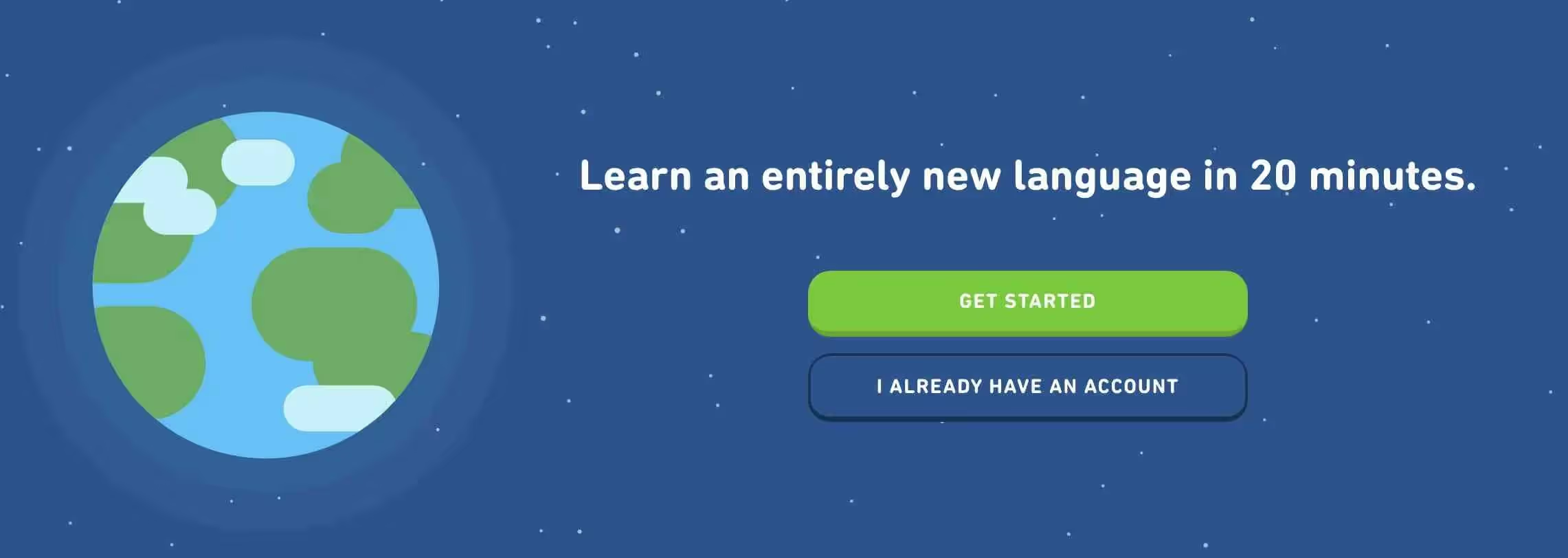
Option B: Hooks that shut down objections
Instead of a bold claim, you might decide to focus on addressing your users’ top objection(s).
Let’s look at the web design tool, Webflow, as a case for our example. Below is a sample ATF header, which hasn’t been paired with a hook yet:
”Build your own website.”
Seeing this, readers might have initial objections such as:
- “But I don’t know how to code. Doesn’t web design require coding skills?”
- “This will take way too long to learn. I don’t have time, I’m not a designer.”
- “It will probably be low-functionality and constraining, like other ‘easy’ site design tools.”
Now it’s Webflow’s job to identify which of these objections they can proactively address above the fold. Of course, addressing multiple objections can be effective, but it requires balance. If your header becomes bloated, it gets less effective. Here’s how Webflow might handle these objections in a smart way:

Don’t try to address every objection (even though we got lucky with a few here). You can do that further down the page. If you find you can only address one key objection in your header without going too wide, that’s okay.
But let’s back up. How do you identify your customers’ biggest objections in the first place? An easy way is to survey them. You can ask current customers these two questions:
- “What almost stopped you from buying?”
- “Why do you think non-customers haven’t bought from us yet?”
The answers to either of these will be objections.
Now let’s revisit our earlier examples, this time showing how our value-based action statements can be augmented to handle objections.
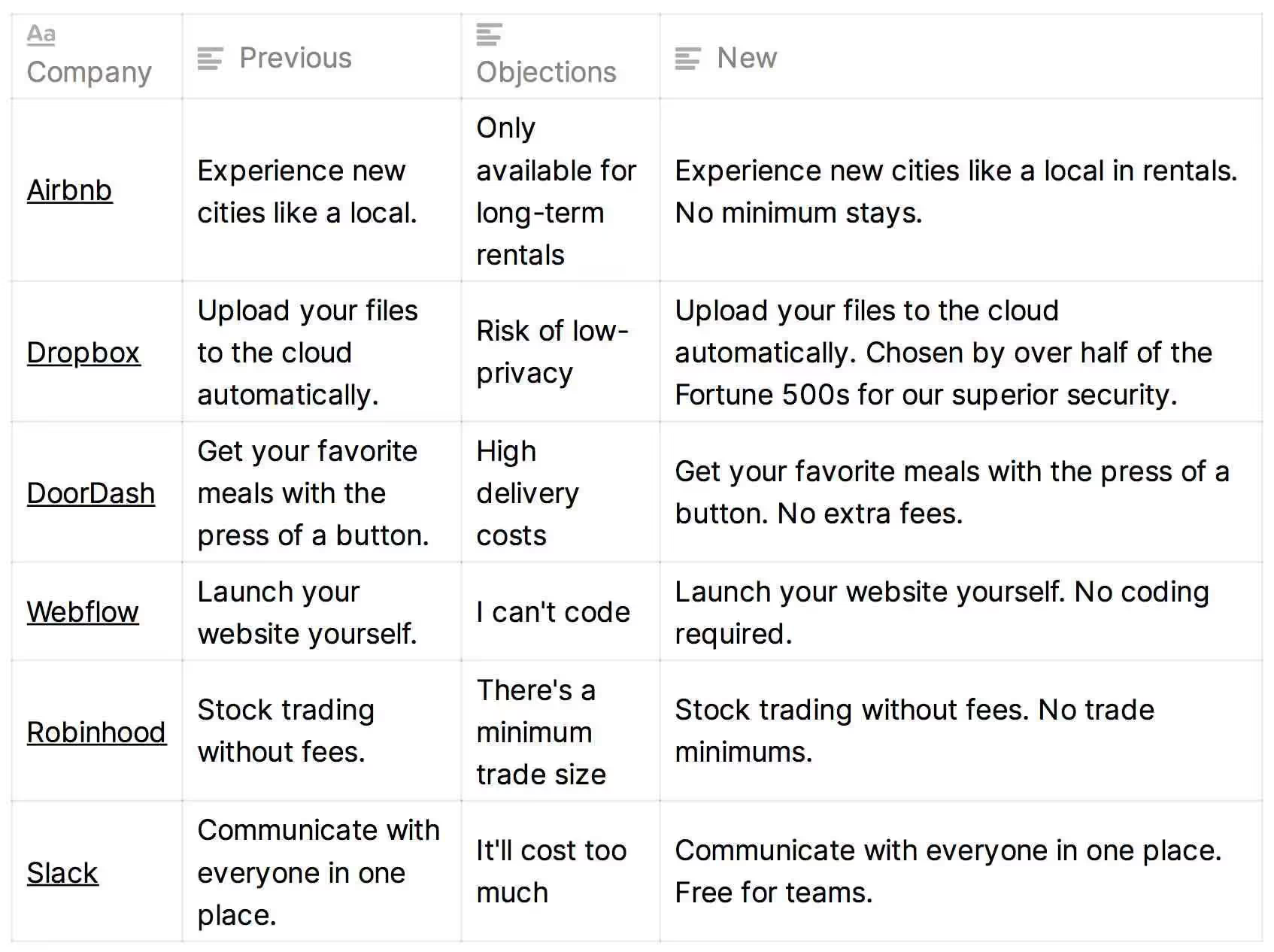
Now that you’ve got a hook to strengthen your argument (either through a bold claim or by addressing objections) let’s get it dialed in for the right people.
Headline Pt. 3: Speak to Your Customer Persona
So far, we’ve articulated the major benefit of our product or service clearly, then added a hook to keep visitors engaged.
Now it’s time to make sure we’re speaking to the right audience. It’s okay to go niche with this, if warranted. Think of it like a sliding scale: the smaller your target, the more pointed your message should be.
Start by listing who you’re selling to. Prioritize that list based on your business objectives and ROI, then directly address those personas in your ATF copy. Let’s look at some examples:
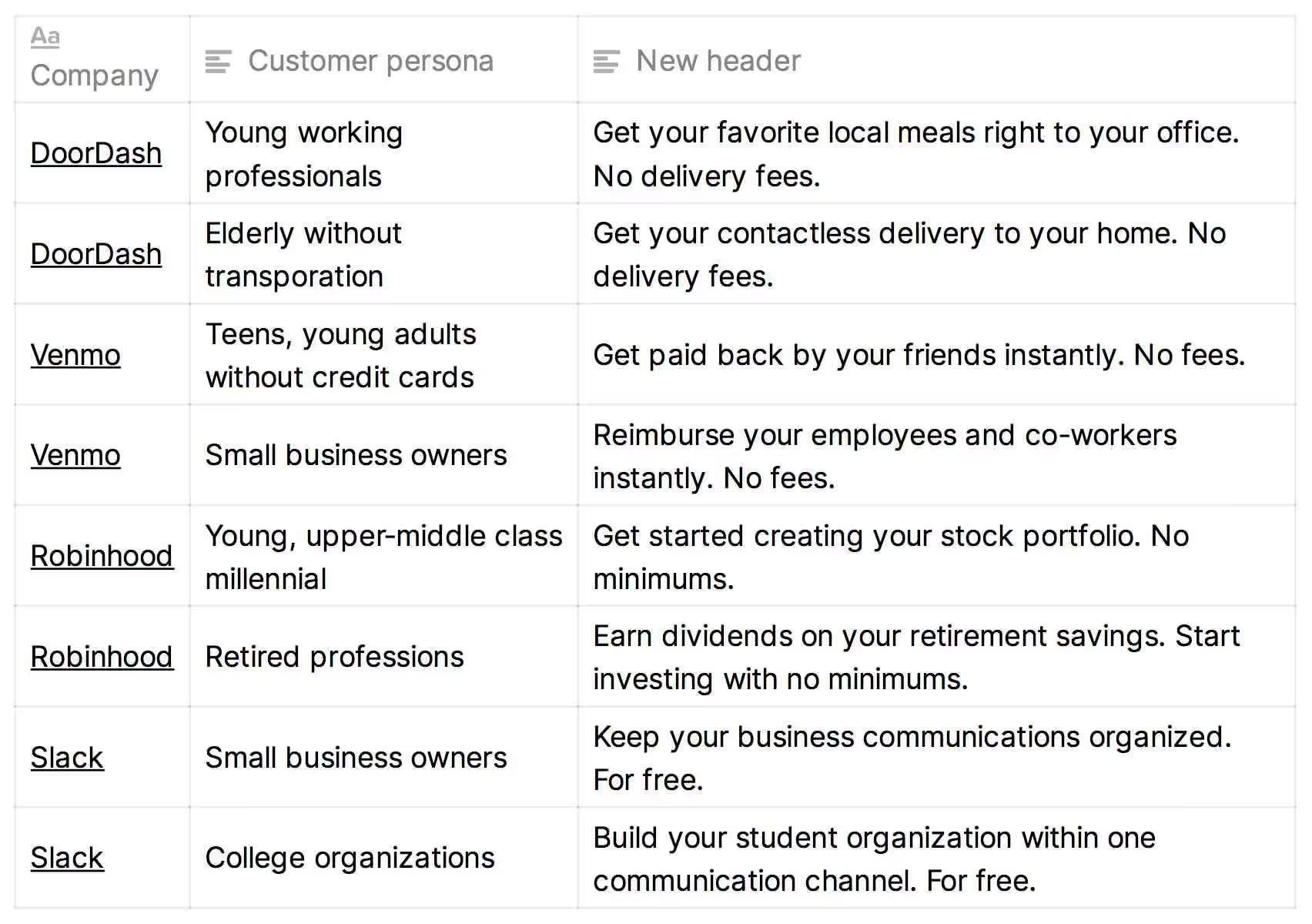
You’ll notice each of the examples features two customer personas. This is to show how the message can modulate between audiences, whether that’s through unique, audience-specific landing pages or something like a “choose your own adventure” approach, shown below (archived from Xeal Energy).

This is not to say you need a unique experience tailored to each possible customer subset. For startups gaining traction, it’s typically best to go deep on one before spreading yourself too thin. So make sure you aren’t hurting the UX of your primary target for the sake of appeasing secondary ones.
Now for Your Subheader
Up until this point, we’ve focused on what makes a great ATF headline:
- Find your strongest value prop and shape it into a specific benefit.
- Add a hook that either makes a bold claim or handles objections.
- Tailor your message to your most important persona(s).
Now it’s time to complement your header with a subheader, which will expand on what makes your product special.
If our headers focus on emotion and show how we can change a customer’s state for the better, the subheader follows up with supporting logic.
The subheader is commonly used for expanding on two things:
- What exactly is our product?
- Which features make our header feel bolder or more believable?

This archived subhead from jupiter.co first explains what their product is (green), then explains how its claim “Groceries Done. In Just 5 Minutes.” is possible (in blue).
This example is about as long as your subheader should be. Anything past two beefy sentences is probably too much. One strong sentence is more than okay.
A few more examples of this in action, below:
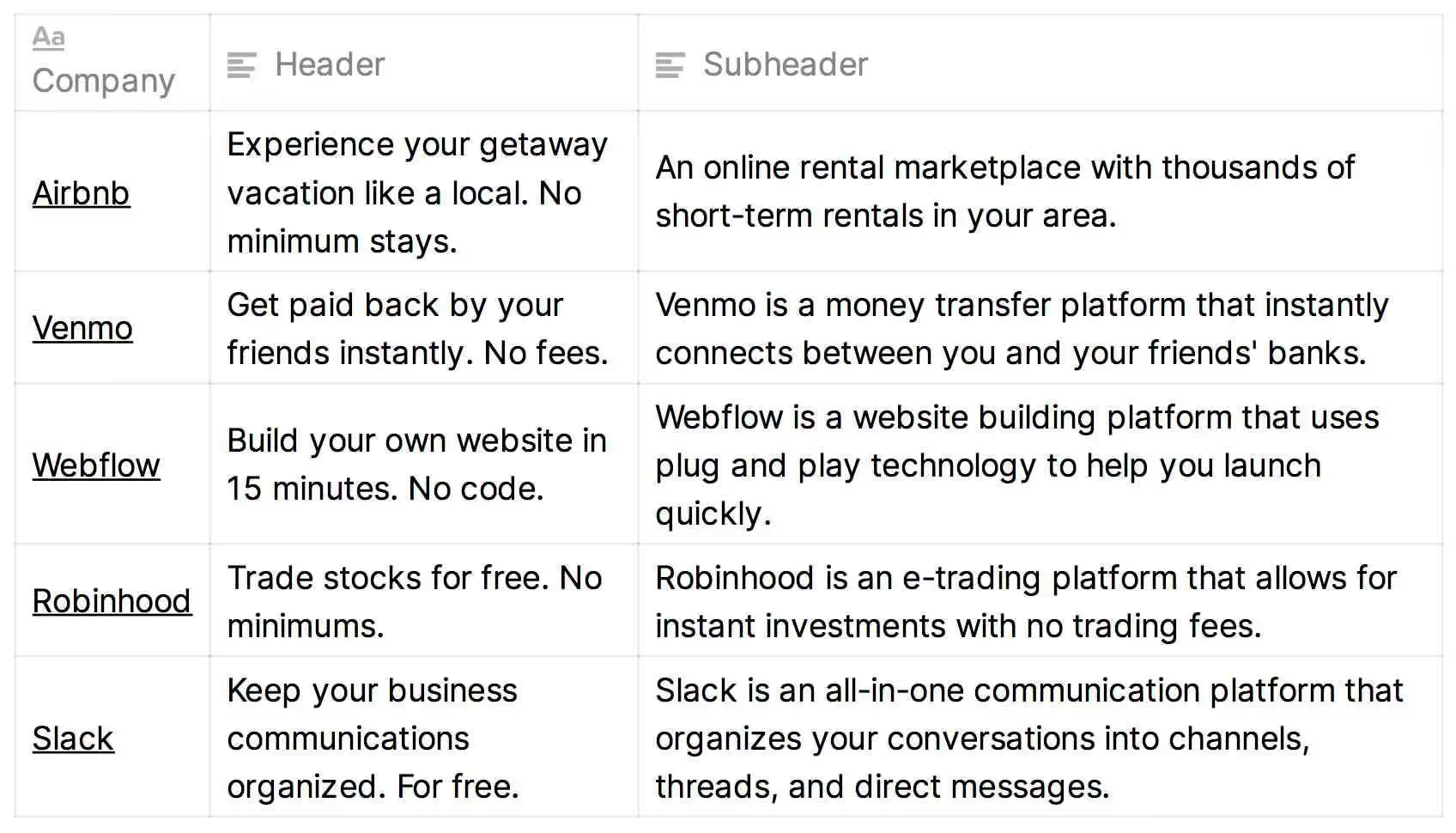
The Takeaway: Silence the Skeptics
Above the fold is where your audience’s skepticism is highest and their attention span is shortest.
When you nail it, you’ll see your bounce rate go down and your conversion rate go up. Mess it up, and viewers will jump ship after a couple seconds, assuming everything below the fold is more of the same dreck.
The good news is, this is one of the most measurable aspects of your marketing. You’ll know quickly if it’s working or not. Don’t tinker with it all the time, but iterate and A/B test, because the results are quick and hard to misread.
Gil Templeton
Demand Curve Staff Writer







